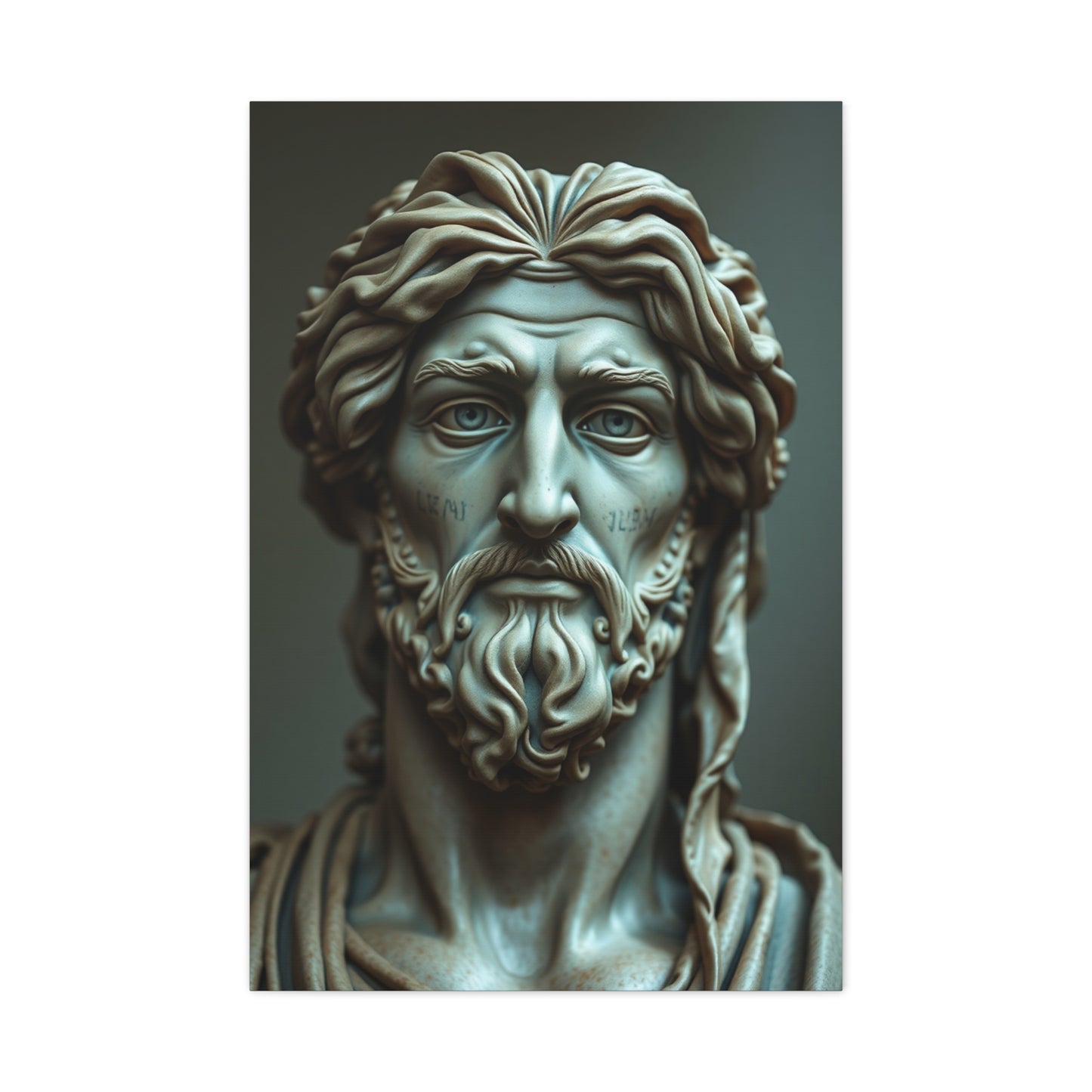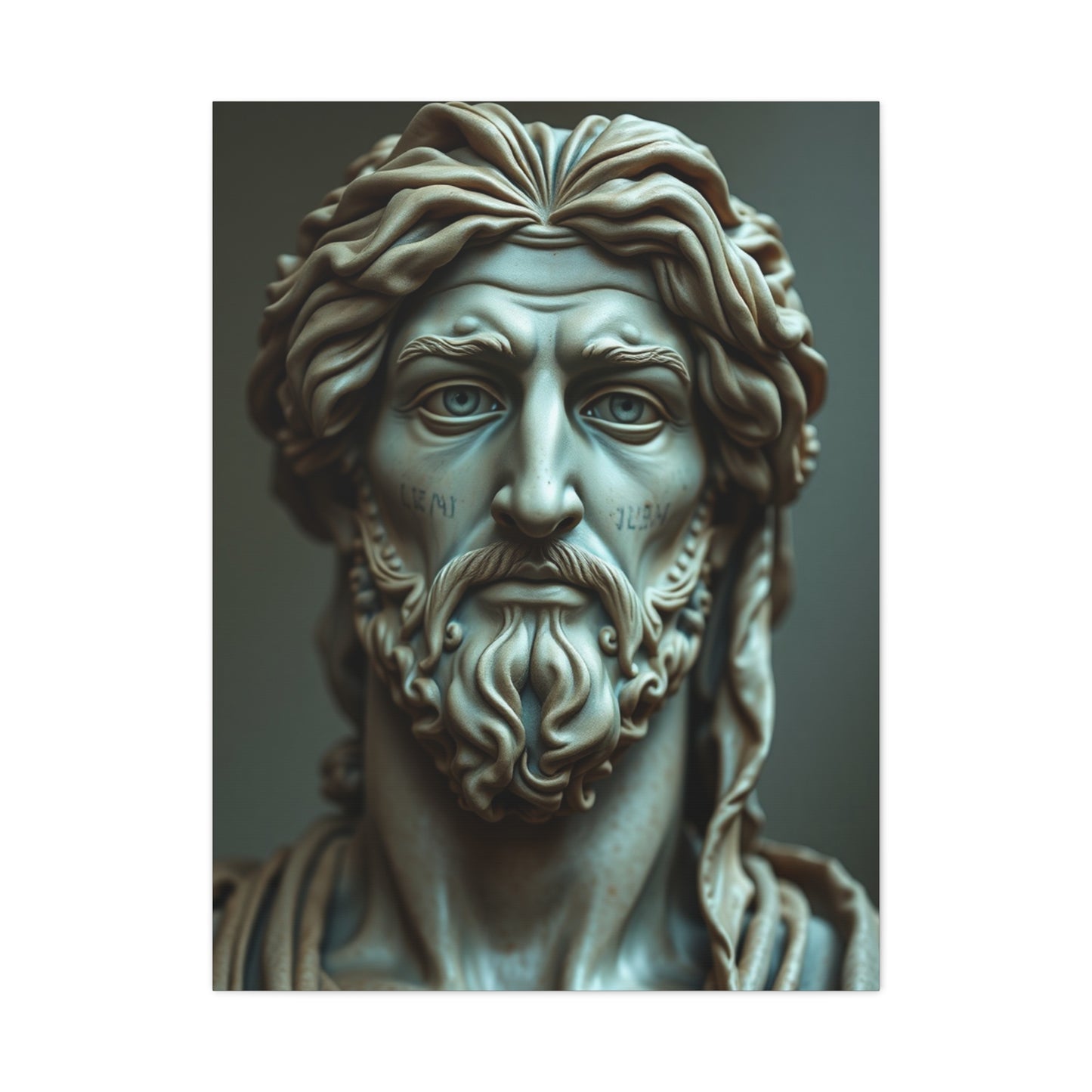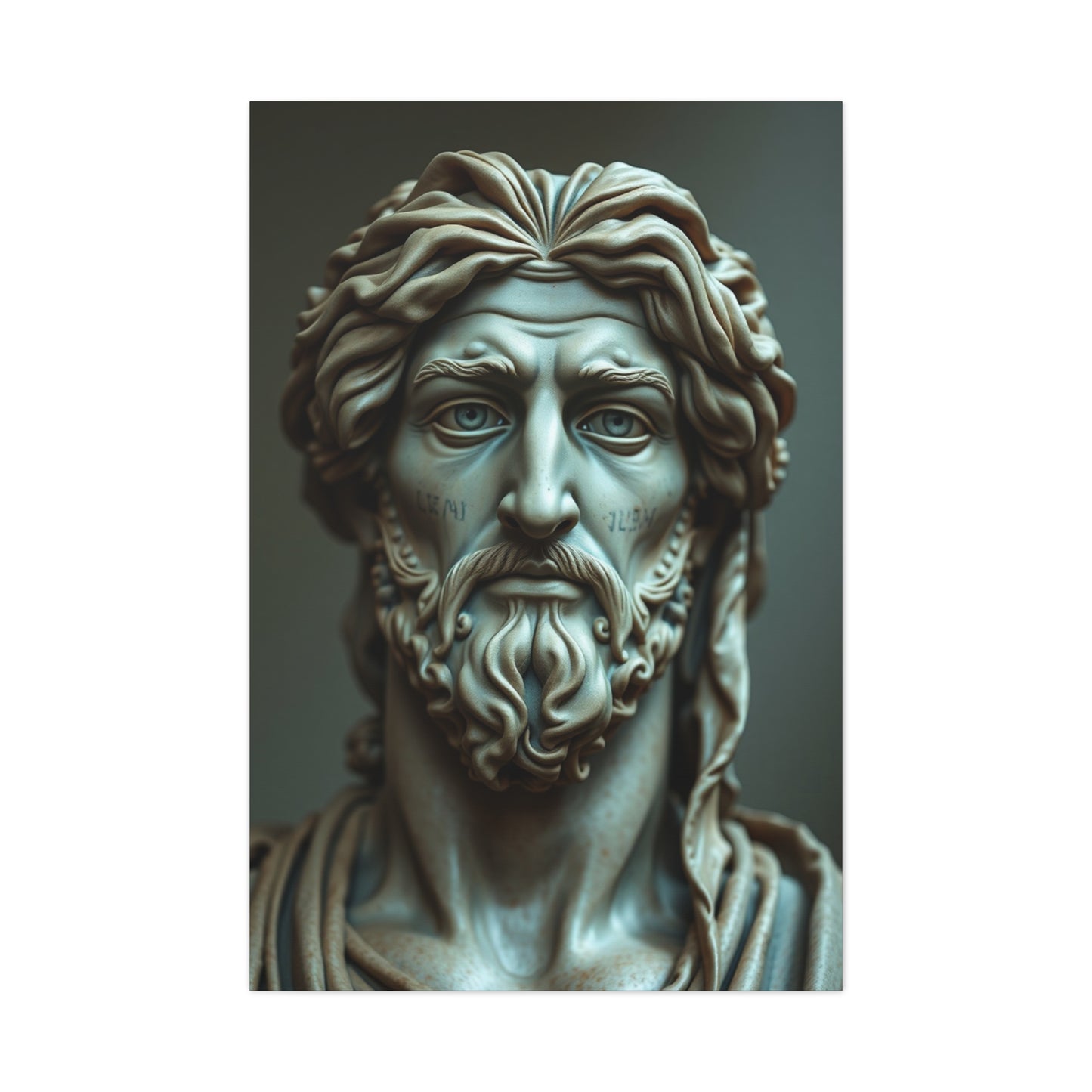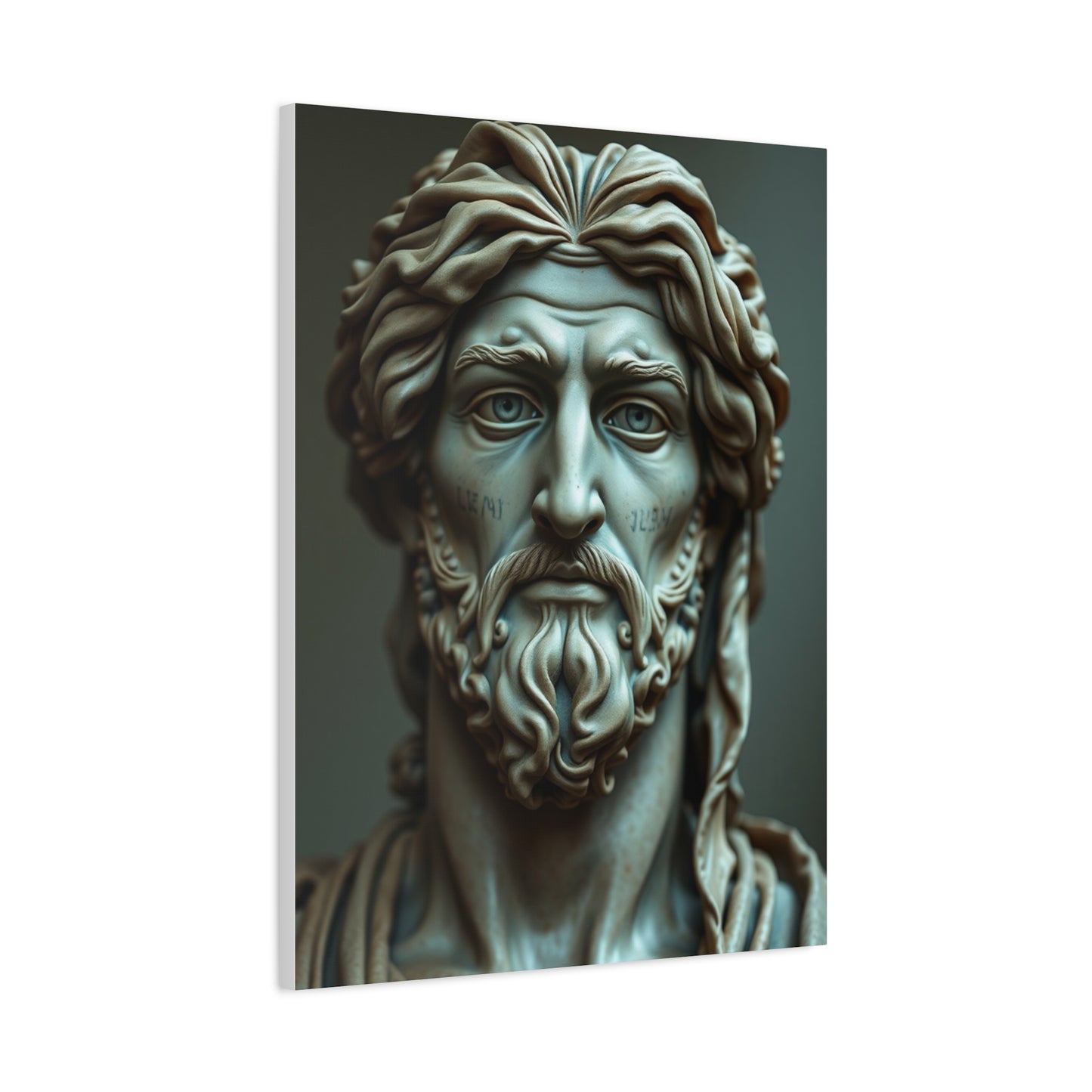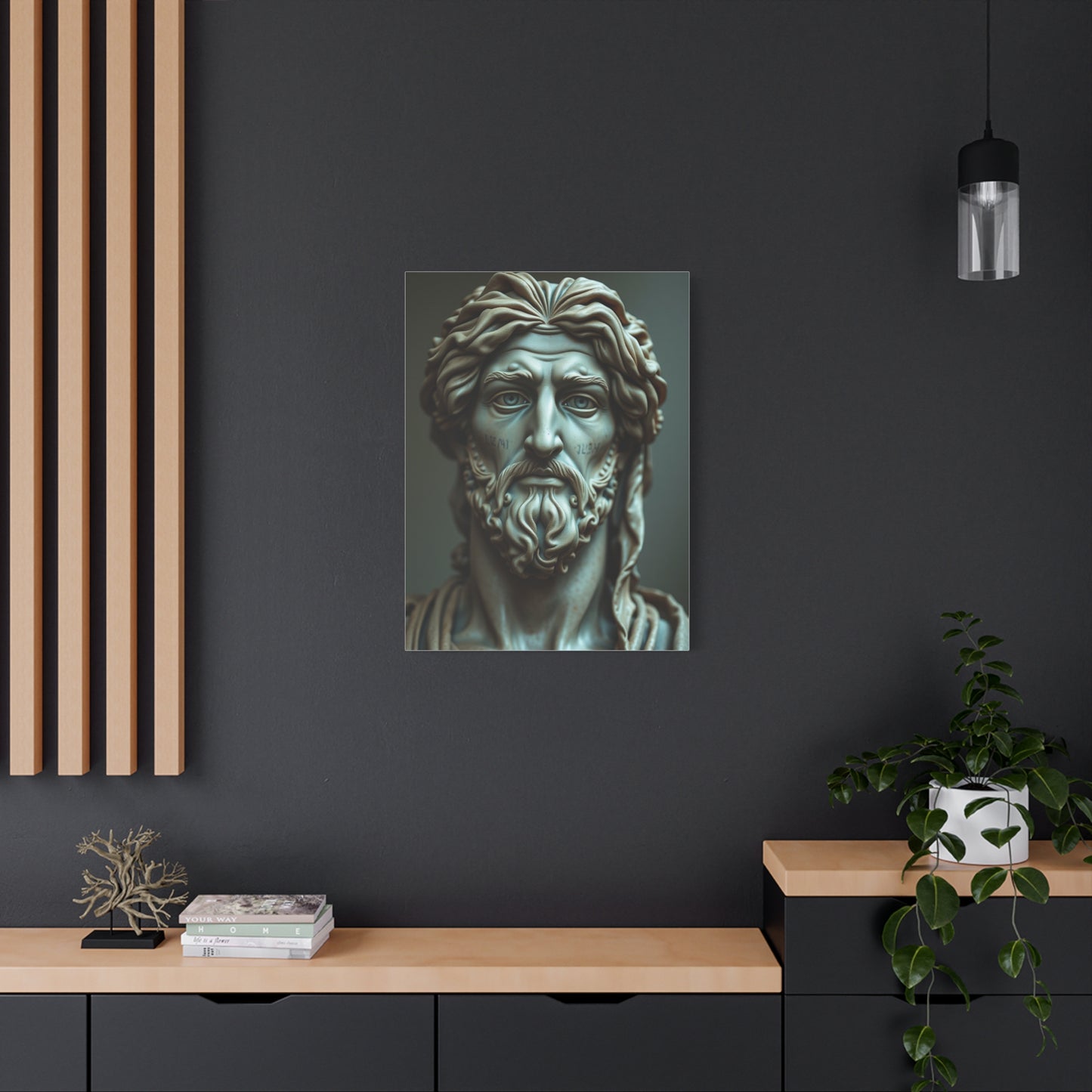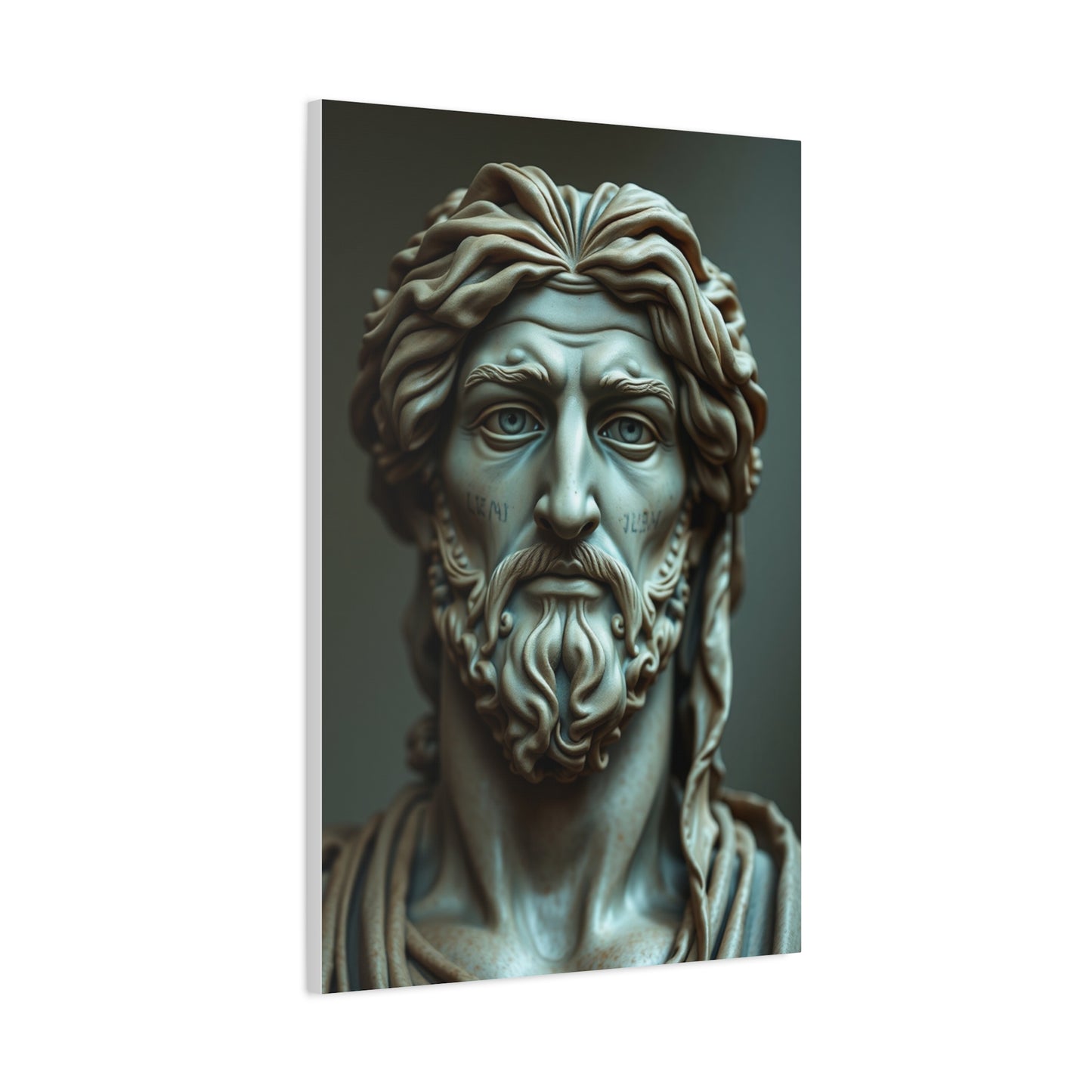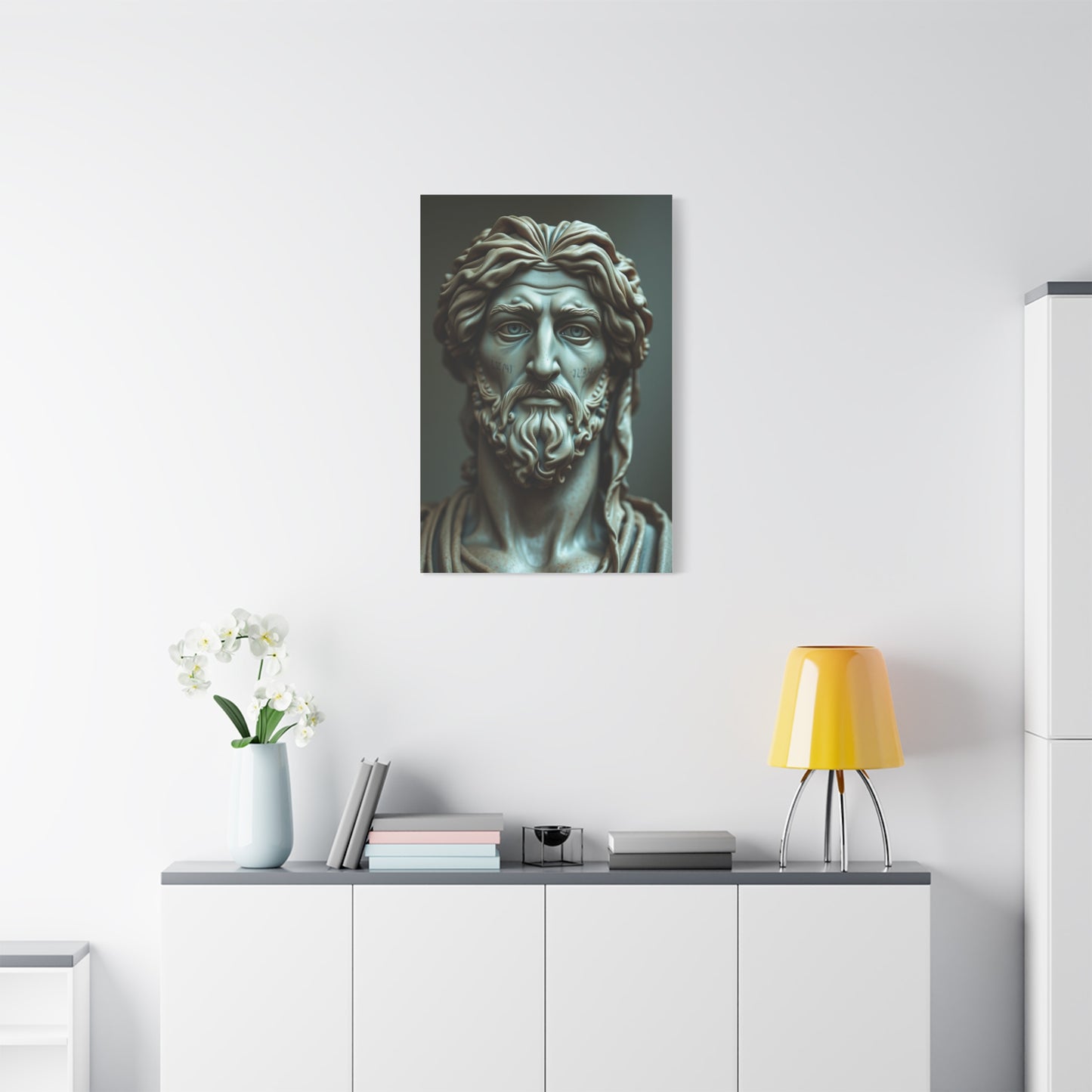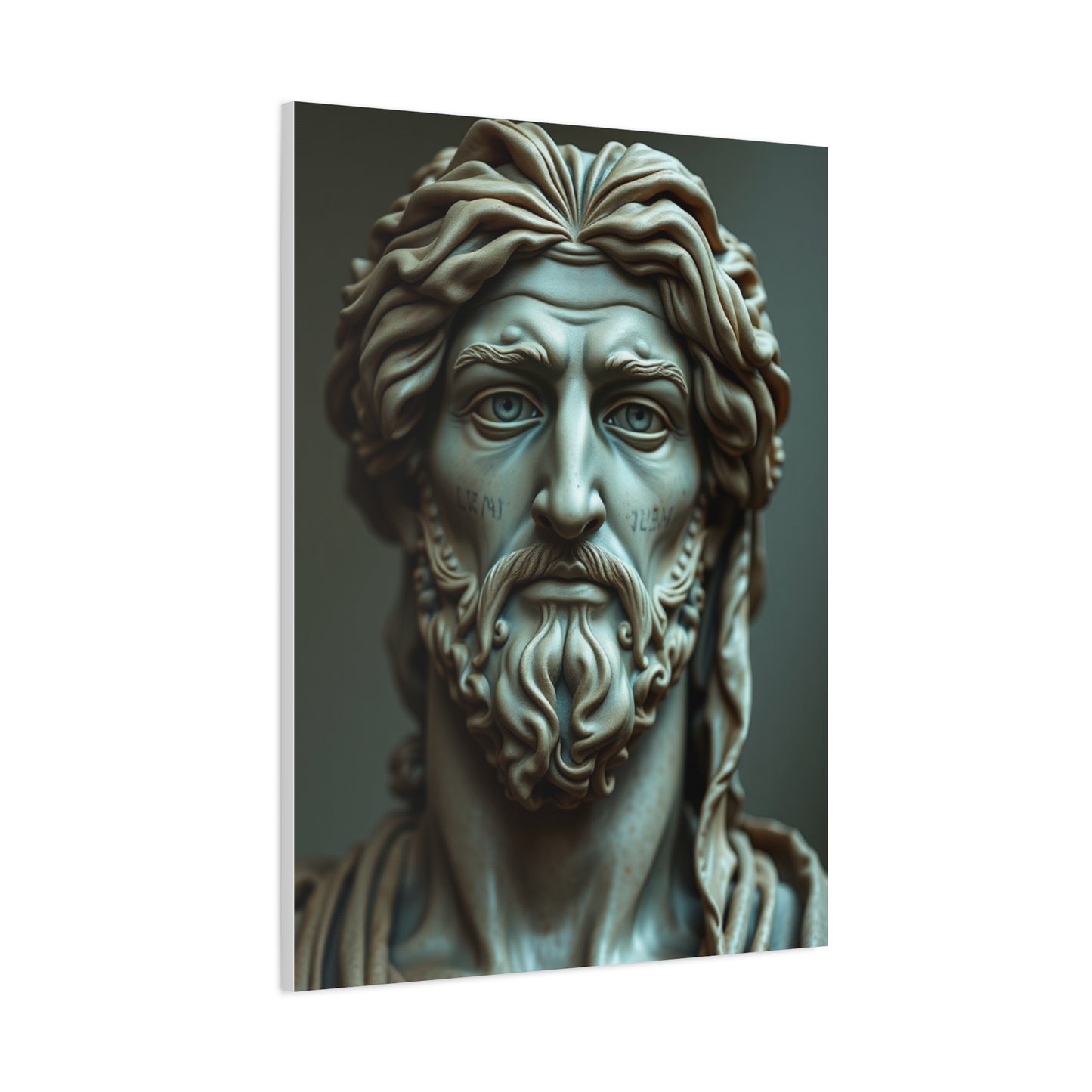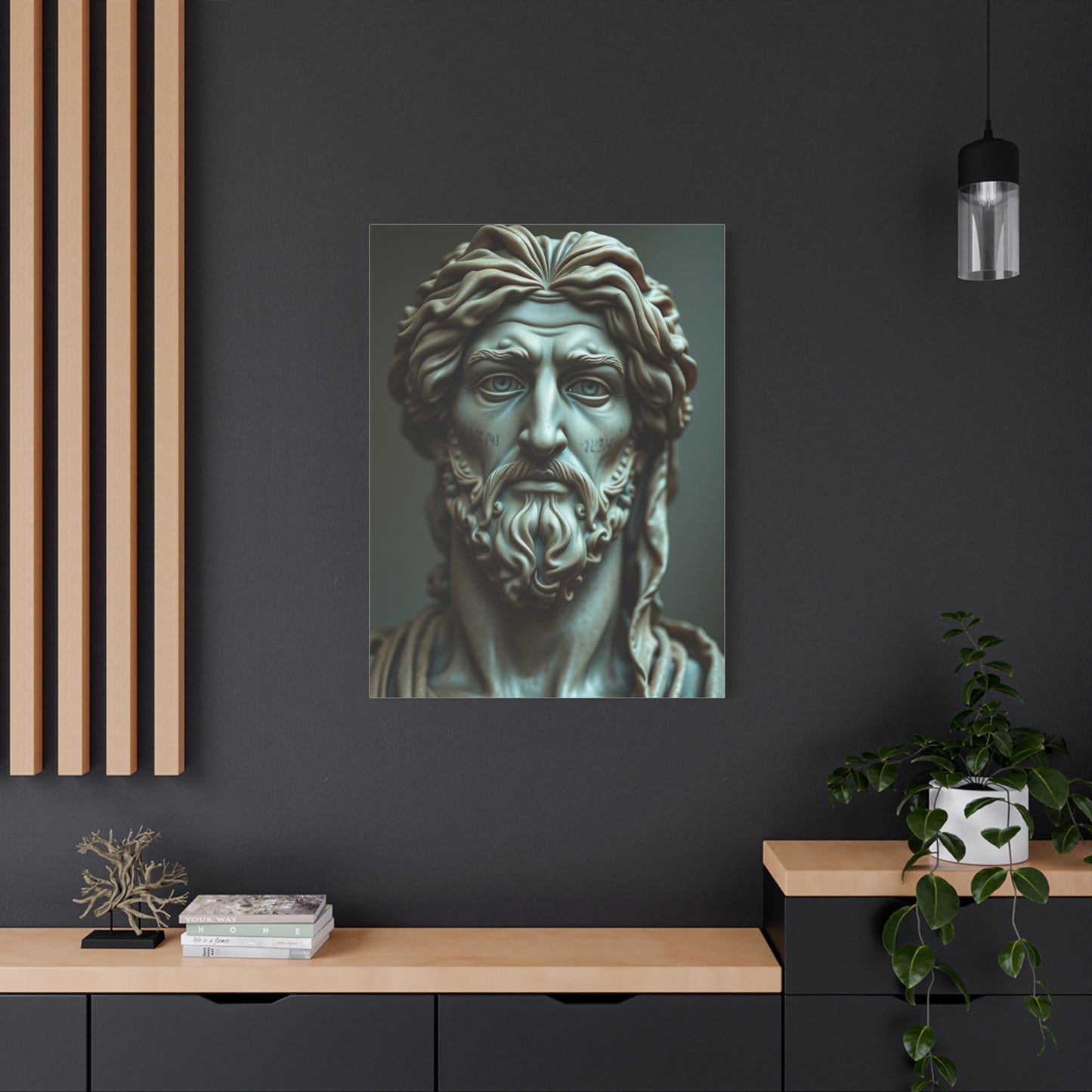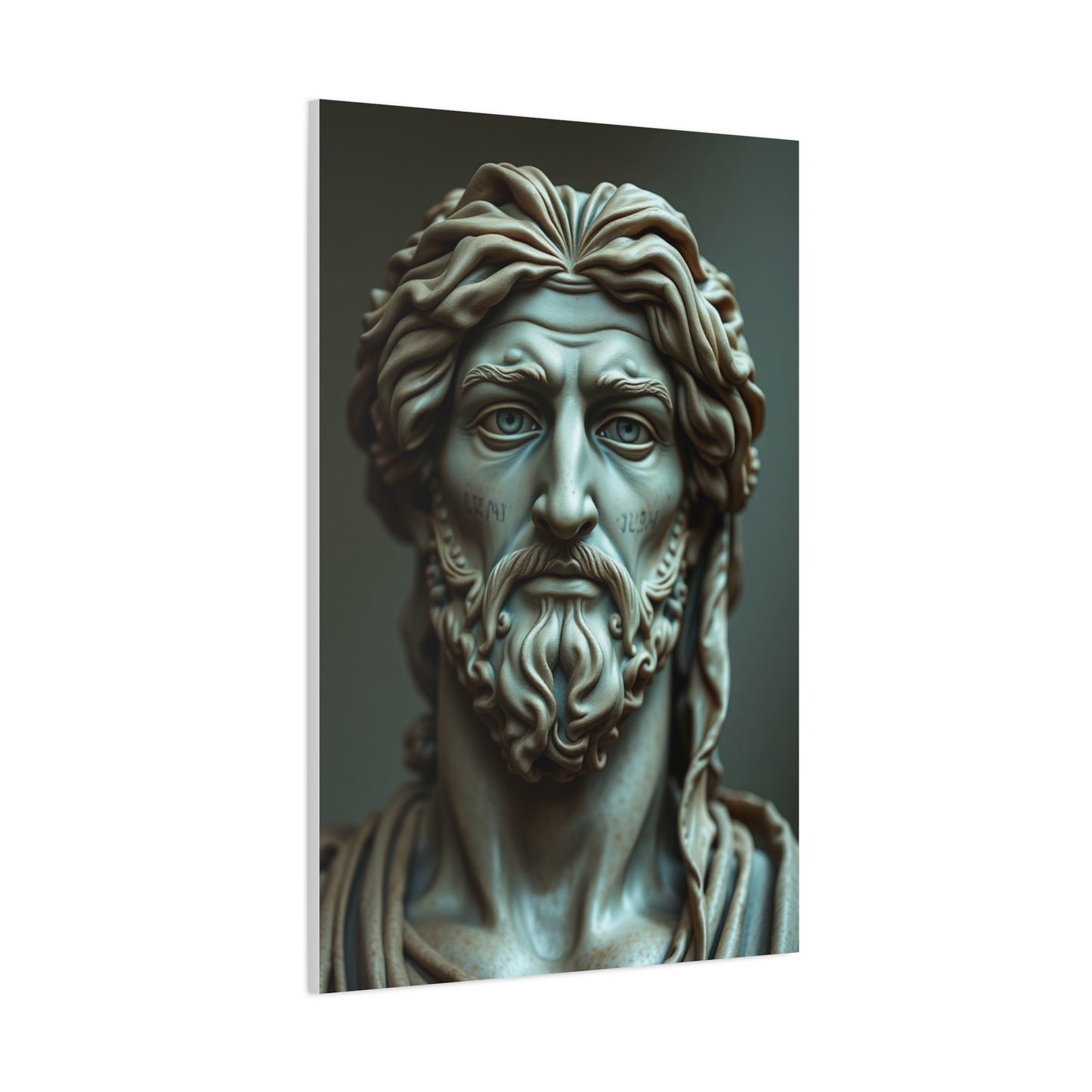Renaissance Masterpiece Canvas: Exploring the Brilliance of History's Most Iconic Artworks
The Renaissance, spanning roughly from the 14th to the 17th century, stands as one of humanity’s most transformative eras, fundamentally reshaping artistic practices and societal values around visual expression. At the heart of this cultural rebirth was the canvas—an innovative medium that enabled artists to communicate revolutionary ideas with newfound depth and sophistication. Through their masterful use of canvas, Renaissance painters explored themes of humanism, spirituality, and the natural world in ways that were unprecedented, creating artworks that remain iconic symbols of artistic and intellectual achievement.Understanding Renaissance masterpiece canvases provides vital insight into the dynamic intellectual and artistic movements that shaped Western culture and continue to inspire contemporary art practices. These works are not merely visual delights but complex narratives layered with philosophical, religious, and scientific ideas reflective of a rapidly changing world.
One of the defining features of Renaissance canvas art was the technical innovation that artists brought to their craft. The development and refinement of linear perspective transformed two-dimensional surfaces into believable three-dimensional spaces. This breakthrough allowed artists like Filippo Brunelleschi to mathematically construct depth and proportion, creating immersive scenes that drew viewers into the narrative. The mastery of light and shadow through chiaroscuro techniques added volume and realism to figures, while sfumato—popularized by Leonardo da Vinci—softened transitions between colors and tones, enhancing the lifelike quality of subjects.Renaissance artists also expanded their thematic repertoire beyond purely religious subjects, integrating classical mythology, portraiture, and everyday life into their canvases. This shift reflected the humanist philosophy that emphasized the dignity and potential of the individual. Artists such as Michelangelo, Raphael, and Titian created works that celebrated human beauty, intellect, and emotion, often using the human body as a vehicle to express divine perfection and universal ideals.
Moreover, Renaissance canvas masterpieces were often commissioned by powerful patrons—ranging from the Catholic Church to wealthy families like the Medici—who saw art as a means to demonstrate status, devotion, and cultural sophistication. This patronage system fostered a competitive environment where artists pushed the boundaries of creativity and technical skill, resulting in some of history’s most enduring artworks.The cultural significance of Renaissance canvases extends beyond their aesthetic brilliance. These works embody a period of exploration and discovery—reflecting the era’s engagement with science, philosophy, and politics. For instance, Leonardo da Vinci’s anatomical studies influenced the precision with which the human form was rendered, while the revival of Greco-Roman ideals informed the balanced compositions and harmony evident in many masterpieces.
Today, Renaissance masterpiece canvases remain a cornerstone of art history education and continue to influence modern artists across genres. They serve as a testament to the power of art to capture the spirit of an age and to communicate complex ideas through visual means.In summary, exploring Renaissance masterpiece canvases reveals not only technical brilliance but also profound cultural transformation. These artworks stand as timeless testaments to the creativity, intellect, and vision of an era that forever changed the trajectory of Western art and thought.
The Foundation of Renaissance Artistic Innovation and Canvas Development
The emergence of the renaissance marked a decisive departure from medieval artistic traditions, introducing new perspectives on how paintings should be constructed and what subjects deserved visual representation. Artists working with canvas during this transformative period revolutionized painting techniques by developing sophisticated approaches to perspective, anatomy, and light manipulation. The renaissance masterpiece canvas tradition developed gradually as artists discovered that canvas offered greater flexibility than traditional wooden panels, allowing for larger compositions and more ambitious thematic explorations. The adoption of canvas as a primary painting surface represented a technological advancement that directly enabled the creation of works of unprecedented scale and complexity.
During the early renaissance, artists began experimenting with how to prepare canvas surfaces, developing primer systems that would eventually become standardized throughout Europe. The transition from wooden panels to canvas happened gradually, with some artists initially continuing traditional methods while others embraced the new possibilities that stretched fabric provided. This period of artistic experimentation produced remarkable innovations in how pigments were applied, how layers of paint interacted with one another, and how artists could achieve increasingly sophisticated effects of light and shadow. The renaissance masterpiece canvas works from this era demonstrate the rapid evolution of technique as artists built upon each other's discoveries and refined their approaches through dedicated practice and systematic observation.
Pigment Selection in Renaissance Canvas Works
The creation of a renaissance masterpiece canvas required extraordinary technical knowledge encompassing everything from canvas preparation to pigment formulation to glazing techniques. Renaissance artists invested years in mastering the specific properties of different pigments, understanding which colors maintained their vibrancy over centuries and which might fade or shift in tone over time. The selection of pigments for a renaissance masterpiece canvas reflected both artistic vision and practical considerations, as certain expensive pigments like lapis lazuli blue became status symbols indicating a patron's wealth and the artist's prestige. Master artists developed proprietary techniques for mixing pigments, creating glazes of extraordinary transparency, and building up layers of paint in ways that created luminosity and depth impossible to achieve with simple application methods.
The preparation of canvas itself involved multiple stages that directly affected how paint would adhere and how the finished work would age. Artists would stretch fabric over wooden frames, then coat the canvas with a primer substance, traditionally made from gesso, which consisted of plaster, animal glue, and sometimes lead white. This preparation layer served as the foundation for all subsequent paint layers, ensuring proper adhesion and creating a surface with specific absorbency characteristics. Renaissance artists understood that the quality of this preparation directly influenced whether a renaissance masterpiece canvas would retain its beauty across centuries or deteriorate rapidly. The careful attention paid to these technical preliminaries demonstrates how renaissance artists combined scientific understanding with artistic vision, recognizing that beautiful paintings required mastery of materials as much as mastery of composition and representation.
Perspective Revolution and Spatial Innovation in Canvas Composition
The development of linear perspective fundamentally transformed how artists approached the composition of renaissance masterpiece canvas works, introducing mathematical principles that created unprecedented visual coherence and depth. Artists like Filippo Brunelleschi and Leon Battista Alberti documented systematic methods for representing three-dimensional space on flat canvas surfaces, discoveries that revolutionized painting across Europe. The application of perspective principles to renaissance masterpiece canvas compositions allowed artists to create environments that appeared convincingly spatial, with architectural elements and human figures positioned according to mathematical ratios that reflected actual visual perception. This innovation represented a dramatic departure from medieval painting traditions, where objects were arranged more for symbolic significance than spatial accuracy.
The mastery of perspective became essential to creating successful renaissance masterpiece canvas works, with artists spending considerable effort studying geometry and mathematics to understand how light rays traveled through space and how objects appeared to diminish in size as they receded into distance. The application of these principles created a revolutionary sense of theatrical space within paintings, allowing viewers to imaginatively enter the depicted environments. Renaissance masterpiece canvas creators used perspective not merely as a technical accomplishment but as a powerful tool for enhancing narrative drama and spiritual significance. The convergence of vanishing points in many renaissance masterpiece canvas compositions directs viewer attention toward specific focal points, whether a religious figure, a crucial moment in a narrative, or a symbolic architectural element.
The Evolution of Anatomical Accuracy in Figure Representation
Renaissance artists revolutionized the representation of human anatomy in their masterpiece canvas works through systematic study of the body, including dissection and detailed observational drawing. The pursuit of anatomical accuracy represented a fundamental shift in artistic priorities, reflecting the humanistic values of the renaissance period and the desire to understand the human form as a subject of serious study rather than stylized convention. Artists like Leonardo da Vinci and Michelangelo invested enormous energy in anatomical research, producing drawings and studies that documented their investigations into how muscles, bones, and organs functioned beneath the skin. This knowledge directly informed their creation of renaissance masterpiece canvas works, where human figures displayed unprecedented naturalism and physical authenticity.
The incorporation of anatomical accuracy into renaissance masterpiece canvas compositions elevated figure painting to a new level of sophistication, allowing artists to create powerful expressions of human emotion and physical presence. Renaissance masterpiece canvas works featuring accurately depicted anatomy conveyed greater emotional authenticity because the figures moved and gestured in ways that reflected actual human behavior. The study of anatomy extended beyond external appearance to encompass gesture and movement, with artists carefully observing how the body positioned itself during various emotional and physical states. This commitment to truthful representation of the human form became a hallmark of the finest renaissance masterpiece canvas creations, distinguishing them from earlier traditions and establishing new standards for figurative art that influenced countless subsequent generations of artists.
Color Theory and Chromatic Harmony in Renaissance Canvas Masterpieces
Renaissance artists developed increasingly sophisticated understandings of how colors interacted with one another, recognizing that the placement and proportion of colors fundamentally affected how viewers experienced a painting. The creation of successful renaissance masterpiece canvas works required careful consideration of chromatic relationships, with artists using warm and cool colors to create visual balance and direct attention toward specific compositional elements. The study of color harmony became formalized during this period, with treatises documenting principles that artists could apply when planning their renaissance masterpiece canvas compositions. Artists understood that colors appeared different when placed adjacent to one another, and they employed this knowledge to create effects of vibrancy, luminosity, and spatial recession.
The development of color theory directly enhanced the visual impact of renaissance masterpiece canvas works by providing artists with systematic approaches to selecting and combining pigments. Master artists would plan their color schemes carefully, considering how local colors would interact with reflected light, shadows, and atmospheric effects. The application of color theory to renaissance masterpiece canvas creation allowed artists to achieve unprecedented harmony within complex compositions featuring multiple figures and complex narratives. The most accomplished renaissance masterpiece canvas creators demonstrated extraordinary sensitivity to subtle variations in hue, value, and saturation, creating paintings where every color choice contributed to overall artistic intention and visual coherence.
Patronage Systems and the Commissioning of Renaissance Canvas Masterpieces
The production of renaissance masterpiece canvas works occurred within complex systems of patronage that determined which artists received commissions, what subjects they depicted, and how extensively they could elaborate their compositions. Wealthy merchants, religious institutions, and aristocratic families commissioned renaissance masterpiece canvas works to demonstrate their cultural sophistication, religious devotion, and economic power. The relationship between patron and artist significantly influenced the creation of renaissance masterpiece canvas paintings, as patrons specified desired themes, sizes, and sometimes even composition details while artists brought their technical skill and creative vision to the project. Understanding patronage systems is essential to comprehending how renaissance masterpiece canvas works were produced and what they communicated to their original audiences.
The commissioning process for major renaissance masterpiece canvas works typically involved detailed negotiations about artistic fees, material costs, timeline for completion, and specific requirements regarding composition and subject matter. Wealthy patrons expected to receive works that reflected their investment and their understanding of aesthetic quality, creating incentives for artists to employ their most sophisticated techniques and most ambitious visions. The prestige associated with receiving commissions for important renaissance masterpiece canvas works motivated artists to develop their skills continually and to experiment with new approaches that might distinguish their work from competitors. The patronage system thus created a competitive environment that encouraged artistic innovation while ensuring that the finest materials and most talented artists focused their efforts on creating works of enduring significance.
Religious Symbolism and Spiritual Meaning in Sacred Canvas Compositions
Religious subjects dominated renaissance masterpiece canvas production, with churches and religious organizations commissioning paintings that would inspire spiritual contemplation and communicate theological concepts to largely illiterate populations. The creation of renaissance masterpiece canvas works featuring religious themes required artists to understand complex theological symbolism and to depict familiar biblical narratives in ways that remained true to tradition while incorporating innovative artistic approaches. Artists working on renaissance masterpiece canvas religious compositions included symbolic elements that conveyed deeper spiritual meaning beyond the literal narrative, incorporating references to sacred texts and theological concepts that educated viewers would recognize and appreciate. The finest examples of renaissance masterpiece canvas religious art achieved remarkable synthesis of artistic beauty with spiritual significance, creating works that functioned simultaneously as aesthetic achievements and vehicles for religious instruction.
The representation of sacred figures in renaissance masterpiece canvas works required careful attention to conventions that had developed over centuries of Christian art history. Artists understood that certain attributes, gestures, and compositional arrangements communicated specific aspects of religious meaning, and they employed these conventional elements while simultaneously introducing innovative techniques that enhanced visual impact. The halos, architectural settings, and groupings of figures in many renaissance masterpiece canvas religious compositions reflected established iconographic traditions while displaying the new naturalism and spatial sophistication that characterized renaissance achievement. The ability to work successfully within established religious conventions while simultaneously advancing artistic technique represented a crucial skill for artists creating important renaissance masterpiece canvas commissions.
Mythological and Historical Subject Matter in Renaissance Canvas Art
Beyond religious subjects, renaissance masterpiece canvas works frequently depicted classical mythological themes and historical narratives that reflected humanistic interests in ancient texts and classical culture. The recovery and study of classical literature during the renaissance created demand for paintings depicting scenes from mythology and ancient history, with artists creating elaborate renaissance masterpiece canvas compositions that showcased their knowledge of classical sources and their ability to represent complex narratives visually. Mythological subjects provided opportunities for artists to demonstrate their anatomical knowledge, their mastery of composition, and their ability to create psychologically complex representations of human emotion and interaction. The finest examples of renaissance masterpiece canvas depicting mythological themes achieved remarkable synthesis of classical learning with contemporary artistic innovation.
The selection of classical subjects for renaissance masterpiece canvas works communicated educated taste and sophisticated understanding of literary traditions to viewers educated in classical learning. Artists would often consult written descriptions of classical events, attempting to create visually compelling interpretations that honored their sources while exercising creative imagination. The representation of mythological themes in renaissance masterpiece canvas compositions frequently included allegorical layers of meaning, with specific figures or actions representing abstract concepts or moral principles. The complexity and ambition of many renaissance masterpiece canvas depicting classical subjects demonstrated how thoroughly the renaissance period embraced classical culture and how extensively this engagement influenced artistic practice and patronage decisions.
The Role of Drawing and Preparatory Studies in Achieving Canvas Mastery
The creation of successful renaissance masterpiece canvas works began long before paint was applied to fabric, with artists developing elaborate systems of preliminary drawing and study that allowed them to work out compositional problems and refine their artistic vision. Renaissance masters understood that careful preparation substantially increased the likelihood of achieving successful outcomes, and they invested enormous time in creating preparatory studies before beginning work on their final paintings. The drawing process for renaissance masterpiece canvas projects included quick compositional sketches to work out overall arrangements, detailed anatomical studies to ensure accurate figure representation, and careful studies of drapery, landscape elements, and other specific details. These preliminary drawings demonstrated artistic decision-making processes and provided opportunities to experiment with alternative approaches before committing to specific solutions on the canvas itself.
The relationship between drawing and painting in the creation of renaissance masterpiece canvas works was intimate and essential, with each preliminary study building toward the final composition. Many great renaissance masterpiece canvas creators developed distinctive drawing styles that became recognizable expressions of their artistic personality and approach. The preservation of these preliminary studies provides invaluable insight into how renaissance masterpiece canvas artists thought about composition, how they solved visual problems, and how their vision evolved during the creative process. The meticulous preparation that preceded the creation of important renaissance masterpiece canvas works reflected the seriousness with which these artists approached their craft and their recognition that fundamental planning and careful study contributed substantially to achieving excellence.
Workshop Organization and Collaborative Canvas Production Methods
The production of major renaissance masterpiece canvas works frequently involved workshops where master artists directed teams of assistants who contributed to various stages of creation and completion. The master artist typically designed the composition and executed the most important elements while assistants performed more routine tasks such as preparing canvas, mixing pigments, applying primer coats, and executing less prominent portions of the composition. The workshop system allowed master artists to accept more commissions than they could personally execute, while simultaneously allowing talented younger artists to develop their skills through extended apprenticeship and practical experience. The organization and operation of these workshops fundamentally influenced how renaissance masterpiece canvas works were produced and how artistic styles evolved across regions and generations.
The collaboration inherent in workshop production raises interesting questions about authorship and artistic vision in renaissance masterpiece canvas works, particularly when works were created largely by assistants under the direction of a famous master. The identification of which portions of a painting were executed by the master versus various assistants remains an ongoing scholarly pursuit, with technical analysis and stylistic comparison providing clues about workshop practices and individual contributions. Despite these complications regarding authorship, the workshop system proved remarkably effective at producing extraordinary renaissance masterpiece canvas works while simultaneously training successive generations of artists. The master-apprentice relationship within workshops transmitted both technical knowledge and artistic values, ensuring continuity while allowing for gradual innovation and stylistic evolution.
Conservation Challenges and the Aging of Historical Canvas Works
The preservation of renaissance masterpiece canvas works across centuries has presented conservators with complex technical challenges arising from the materials used, the environmental conditions to which paintings have been exposed, and the natural aging processes affecting both canvas and paint layers. Renaissance masterpiece canvas works were frequently exposed to fluctuating temperature and humidity levels, smoke from fires and candles, dust, and physical damage from handling, transportation, and warfare. The materials used in creating renaissance masterpiece canvas paintings, including canvas fibers, primer layers, and pigments, deteriorate at different rates, sometimes creating stress between layers that leads to cracking, flaking, and the separation of paint from underlying surfaces. The conservation of important renaissance masterpiece canvas works requires specialized knowledge of materials science, art history, and technical painting practices to restore works to their original appearance while maintaining historical integrity.
Many renaissance masterpiece canvas works have been subjected to restoration attempts spanning centuries, some thoughtful and careful while others involved practices now considered damaging to the original artistic vision and material integrity. The removal of old varnish layers, necessary because varnishes darken and discolor with age, must be performed with extreme care to avoid damaging the original paint layers. The addition of inpainting to replace damaged portions presents conservators with ethical decisions regarding how much restoration is appropriate and how inpainting should be distinguished from original work. Modern conservation of renaissance masterpiece canvas paintings employs sophisticated scientific techniques including spectroscopy, radiography, and microscopic analysis to understand the original materials and techniques before undertaking restoration work. The ongoing conservation of renaissance masterpiece canvas masterpieces represents a crucial commitment to preserving these invaluable cultural treasures for future generations.
Geographic Distribution and Regional Variations in Canvas Painting Traditions
The renaissance masterpiece canvas tradition developed somewhat differently across various European regions, with distinct styles and approaches emerging as regional artistic communities developed their own innovations and interpretations of renaissance principles. The Florentine renaissance produced distinctive approaches to figure composition and spatial arrangement, while Venetian artists developed different approaches emphasizing color harmony and the effects of light on drapery and architectural surfaces. The development of renaissance masterpiece canvas traditions in regions beyond Italy followed as Italian artistic innovations spread through artistic travel, the circulation of drawings and prints, and the movement of artists seeking opportunities in various European courts. The geographic distribution of renaissance masterpiece canvas production demonstrates how artistic ideas circulated and adapted to local conditions, materials, and aesthetic preferences.
The northern European interpretation of renaissance masterpiece canvas traditions, developing particularly in the Netherlands and German-speaking regions, incorporated elements of local artistic heritage with innovations arriving from Italian sources. Northern renaissance masterpiece canvas artists often maintained traditions of detailed observation and meticulous rendering of surfaces that reflected their cultural heritage while employing perspective and anatomical accuracy that represented italian renaissance influence. The synthesis of northern European and Italian traditions created distinctive regional variations in renaissance masterpiece canvas art, with artists in different regions approaching similar subjects through somewhat different aesthetic frameworks. The study of these regional variations provides important insight into how artistic movements develop through cross-cultural exchange and adaptation rather than simple imitation or direct transmission of techniques and principles.
The Influence of Renaissance Canvas Masters on Subsequent Artistic Movements
The achievements of renaissance masterpiece canvas creators established new standards for artistic excellence and introduced techniques and approaches that would influence artists for centuries to come. The systematic observation of nature that characterized renaissance masterpiece canvas production contributed to the development of empirical approaches to understanding the world that influenced scientific thinking as well as artistic practice. The humanistic values reflected in renaissance masterpiece canvas depiction of the human form and human experience became foundational to Western artistic traditions, establishing the importance of individual achievement and personal artistic vision. The revolution in artistic technique and aesthetic understanding represented by the finest renaissance masterpiece canvas works fundamentally shaped subsequent developments in European art, establishing principles and practices that remained influential through the baroque, rococo, neoclassical, and modern periods.
The technical innovations embodied in renaissance masterpiece canvas works, including the sophisticated application of perspective, the systematic study of anatomy, the development of color theory, and the refinement of glazing and layering techniques, became the foundation for subsequent artistic training and practice. Art academies established throughout Europe taught principles derived from the greatest renaissance masterpiece canvas achievements, transmitting these innovations to successive generations of artists who built upon these foundations while introducing their own innovations. The aesthetic values associated with renaissance masterpiece canvas creation, emphasizing naturalism, balance, and harmonic relationships among compositional elements, influenced artistic judgment and patronage decisions for centuries. The enduring influence of renaissance masterpiece canvas traditions demonstrates the fundamental importance of these achievements to the development of Western art history and the establishment of principles that continue to guide artistic practice today.
Market Value and Collecting of Renaissance Canvas Paintings
The market for renaissance masterpiece canvas works has developed into a significant sector of the international art market, with authentic works commanding extraordinary prices and representing some of the most valuable artifacts in human history. The rarity of truly exceptional renaissance masterpiece canvas paintings, combined with their acknowledged importance to art history and cultural heritage, creates intense competition among collectors, museums, and wealthy individuals seeking to own these works. The authentication of renaissance masterpiece canvas paintings has become a specialized field requiring connoisseurship combined with scientific analysis, as the value of these works depends upon verified authenticity and documented provenance. The prices realized at auction for authenticated renaissance masterpiece canvas works sometimes exceed hundreds of millions of dollars, reflecting the scarcity of major works available for sale and the intense desire among collectors to own examples of these achievements.
The collecting of renaissance masterpiece canvas works reflects complex motivations including aesthetic appreciation, cultural prestige, financial investment, and the desire to preserve important cultural heritage. Major museums and public institutions have competed vigorously to acquire important renaissance masterpiece canvas paintings, considering these acquisitions essential to their missions and their ability to educate the public about art history. The movement toward public ownership and exhibition of renaissance masterpiece canvas works has democratized access to these historically significant paintings, allowing viewers without personal wealth to study and appreciate works that were previously available only to elite collectors. Nevertheless, the continued existence of important renaissance masterpiece canvas works in private collections raises ongoing questions about access, preservation responsibility, and the appropriate balance between private ownership and public interest in these invaluable cultural resources.
Digital Documentation and Virtual Access to Canvas Masterpieces
The development of digital technologies has revolutionized how renaissance masterpiece canvas works can be documented, studied, and made accessible to audiences who cannot visit the museums where these paintings are housed. High-resolution digital imaging of renaissance masterpiece canvas paintings allows researchers to examine details that might be difficult to observe in person, revealing compositional decisions, underlayers, and technical choices made during the creation process. The development of virtual museum exhibitions and online databases featuring renaissance masterpiece canvas works has dramatically expanded public access to these paintings, allowing students, scholars, and art enthusiasts anywhere in the world to engage with these important works. The application of three-dimensional imaging technology to renaissance masterpiece canvas paintings creates opportunities for understanding how light interacts with painted surfaces and how viewers' experiences vary depending upon viewing distance and angle.
The potential for virtual reality technologies to recreate the experience of viewing renaissance masterpiece canvas works in their original architectural settings represents an exciting frontier for art historical study and public engagement. Digital documentation of renaissance masterpiece canvas paintings also serves crucial preservation functions, creating detailed records that would facilitate restoration of damaged works and that would preserve knowledge of important paintings even if the original artworks were destroyed. The democratization of access enabled by digital technologies has fundamentally changed how renaissance masterpiece canvas works are studied and appreciated, allowing scholars to undertake comparative analysis and research that would have been substantially more difficult before the availability of high-quality digital images. The ongoing development of digital technologies promises to further expand possibilities for studying, preserving, and sharing knowledge about renaissance masterpiece canvas achievements.
Comparative Analysis of Technique Across Different Renaissance Canvas Masters
The study of renaissance masterpiece canvas works created by different masters reveals distinctive approaches to common challenges including composition, color, perspective, and the representation of human emotion and interaction. Leonardo da Vinci's approach to the creation of his masterpiece canvas works emphasized careful observation of nature, with particular attention to how light created effects of atmospheric perspective and how shadows shaped form. Michelangelo's approach to creating his masterpiece canvas works emphasized monumental human figures with carefully studied anatomy and dynamic poses that conveyed psychological intensity. Raphael's approach to his masterpiece canvas compositions emphasized harmonious arrangement of figures, sophisticated use of color, and the creation of compositions that achieved remarkable balance while communicating complex narratives and spiritual meaning.
The examination of these different approaches reveals how artists with different sensibilities and priorities approached the fundamental challenges of creating masterpiece canvas works. Some masters prioritized naturalistic representation and careful observation of optical phenomena, while others emphasized dramatic emotional expression and psychological intensity. Some artists favored complex narratives with numerous figures arranged in intricate spatial relationships, while others preferred more intimate compositions with fewer figures but greater psychological depth. The diversity of approaches within renaissance masterpiece canvas production demonstrates that artistic excellence could be achieved through different aesthetic principles and technical priorities, rather than through adherence to a single formula or approach. The comparative study of these different approaches provides invaluable insight into how artistic vision and personal sensibility influenced the creation of masterpiece canvas works.
The Role of Symbolism and Iconography in Complex Renaissance Canvas Narratives
The creation of elaborate renaissance masterpiece canvas compositions frequently involved the incorporation of symbolic elements that conveyed meanings beyond the literal narrative depicted in the painting. Artists understood that educated viewers would recognize symbolic references to classical literature, religious texts, and philosophical concepts, and they incorporated these elements deliberately to add layers of meaning to their compositions. The symbols employed in renaissance masterpiece canvas works often connected visual elements to abstract concepts, allowing artists to communicate ideas about virtue, wisdom, love, or divine grace through specific objects, animals, plants, or color choices. The interpretation of these symbolic elements in renaissance masterpiece canvas works requires familiarity with the cultural knowledge and reference systems of the renaissance period.
The sophistication of symbolic communication in renaissance masterpiece canvas works demonstrates the educated audiences for which these paintings were created and the expectations that patrons and viewers brought to encountering these works. An understanding of iconographic conventions and symbolic meanings substantially enriches appreciation of renaissance masterpiece canvas paintings, revealing depths of meaning that might otherwise be overlooked. The combination of realistic depiction of figures and spaces with layers of symbolic and allegorical meaning represents one of the distinctive achievements of renaissance masterpiece canvas creation, allowing these works to function simultaneously as beautifully executed paintings and as complex intellectual and spiritual communications. The study of symbolism and iconography in renaissance masterpiece canvas works continues to reveal new dimensions of meaning and intention in these extraordinary artistic achievements.
Conservation Science and Material Analysis of Historic Canvas Paintings
The application of modern scientific techniques to the study of renaissance masterpiece canvas works has revealed remarkable information about original materials, artistic techniques, and the aging processes affecting these paintings. X-radiography of renaissance masterpiece canvas works reveals underlying compositions and changes made during the painting process, demonstrating how artists revised their designs and sometimes painted over previous compositions. Spectroscopic analysis of paint samples from renaissance masterpiece canvas paintings allows conservators and researchers to identify specific pigments, understand how colors have changed over time, and detect the presence of later alterations or restorations. The examination of canvas fibers under magnification reveals information about canvas weaving practices, helping scholars understand geographic origins and dating of materials used in renaissance masterpiece canvas production.
The detailed analysis of materials in renaissance masterpiece canvas works has sometimes revealed surprises regarding the techniques employed by famous masters, challenging or confirming assumptions based on documentary evidence and stylistic analysis. Scientific examination of paint layers has demonstrated the sophisticated understanding these artists possessed regarding how different pigments would interact, how glazes would modify underlying colors, and how layering of paint would create effects of luminosity and depth. The conservation science applied to renaissance masterpiece canvas works serves both preservation purposes and scholarly objectives, expanding understanding of how these works were created and why they have aged in the ways they have. The ongoing application of new scientific techniques to the study of renaissance masterpiece canvas works promises to reveal additional information about these paintings and to provide insights that inform both conservation and aesthetic understanding.
Economic Factors and Production Costs in Renaissance Canvas Painting
The creation of important renaissance masterpiece canvas works represented substantial economic investments by patrons, reflecting the value placed upon these works and the costs associated with employing skilled artists and acquiring expensive materials. The expenses associated with creating a major renaissance masterpiece canvas included the fees paid to the artist or workshop, the costs of canvas, primer materials, pigments particularly expensive pigments like lapis lazuli or vermilion, and various subsidiary materials and labor. The economic significance of major commissions meant that patronage of renaissance masterpiece canvas works served as a means through which wealthy individuals and institutions demonstrated their economic power and cultural commitment. The relationship between economic investment and artistic ambition is evident in the generally larger scale and greater elaboration of commissioned masterpiece canvas works compared to paintings created for smaller commissions or for sale in open markets.
The economic circumstances of artists and workshops influenced the types of masterpiece canvas works they could undertake, with successful artists able to command higher fees that allowed them to invest more extensively in materials and more extended development of their compositions. The distribution of wealth influenced where major renaissance masterpiece canvas works were created, with wealthy regions and cities attracting talented artists and providing the economic resources necessary to commission ambitious works. The economics of artistic production in the renaissance period shaped the development of artistic communities and influenced the types of innovations that emerged as artists competed for important commissions. Understanding the economic dimensions of renaissance masterpiece canvas production provides important context for understanding why certain works were created, where they were produced, and how artistic innovation developed within the constraints and opportunities created by economic realities.
Legacy and Ongoing Scholarly Interpretation of Renaissance Canvas Achievements
The scholarly interpretation of renaissance masterpiece canvas works continues to evolve as new research methods are applied to these paintings and as historical understanding develops regarding the cultural context within which these works were created. Art historians, conservators, and technical specialists continue to undertake detailed studies of individual renaissance masterpiece canvas paintings, revealing new information about artistic intentions, techniques, and meanings. The increasing accessibility of renaissance masterpiece canvas paintings through digital documentation has enabled new forms of comparative analysis and international scholarly collaboration that would have been difficult before the development of these technologies. The ongoing discovery of previously unknown or underappreciated masterpiece canvas works occasionally emerges through archival research or technical examination of paintings in museum collections.
The contemporary interpretation of renaissance masterpiece canvas works often considers questions that earlier scholars did not prioritize, reflecting evolving scholarly interests and contemporary concerns including gender, power, cultural identity, and the relationship between art and society. The study of how women artists participated in renaissance masterpiece canvas production, a topic that earlier scholarship often overlooked, has revealed important contributions and complex circumstances surrounding women's artistic practice during this period. The examination of cultural exchange and artistic borrowing across different regions and cultures during the renaissance has complicated earlier narratives that portrayed renaissance development as primarily a European phenomenon with Italian primacy. The ongoing scholarly engagement with renaissance masterpiece canvas works ensures that these paintings remain vibrant subjects for research and interpretation rather than static museum artifacts, continuing to generate new insights and enriching contemporary understanding of these extraordinary achievements.
Conclusion:
The creation and preservation of renaissance masterpiece canvas works represents one of humanity's most significant cultural achievements, embodying extraordinary artistic skill, intellectual sophistication, and the capacity for creative vision that characterizes human civilization at its finest. The artists who created these masterpiece canvas paintings developed innovations in perspective, anatomical representation, color theory, and material handling that fundamentally transformed artistic practice and established standards for excellence that have continued to influence artists across subsequent centuries. The commitment of these artists to truthful observation of the natural world, combined with their ability to incorporate symbolic meaning and spiritual significance into their compositions, created works of remarkable depth and resonance. The finest renaissance masterpiece canvas works achieve synthesis of technical virtuosity, intellectual sophistication, and emotional power that places them among humanity's greatest artistic accomplishments.
The historical significance of renaissance masterpiece canvas works extends far beyond their aesthetic qualities, encompassing their role in documenting the beliefs, values, and concerns of the societies that produced them. These paintings provide invaluable insight into renaissance culture, revealing what subjects people considered worthy of artistic representation, what forms of beauty were valued, and how people understood their relationship to the divine, to classical antiquity, and to the natural world. The study of renaissance masterpiece canvas works allows contemporary audiences to engage across centuries with the people who commissioned these paintings and the artists who created them, experiencing something of their intellectual interests and aesthetic sensibilities. The accessibility of these works through museum exhibition and digital documentation ensures that they continue to educate, inspire, and delight audiences who encounter them.
The preservation and conservation of renaissance masterpiece canvas works represents an important responsibility undertaken by museums, conservators, and cultural institutions committed to maintaining these treasures for future generations. The application of scientific techniques to the study and conservation of these paintings has demonstrated how contemporary knowledge and technology can contribute to protecting these works while simultaneously enriching scholarly understanding. The ongoing investment in preservation of renaissance masterpiece canvas works reflects recognition of their irreplaceable value and the commitment to ensuring that future generations will have the opportunity to experience these remarkable achievements directly. The conservation effort dedicated to these paintings acknowledges their status as cultural heritage belonging not merely to specific nations or institutions but to humanity as a whole.
The continued study and appreciation of renaissance masterpiece canvas works ensures their ongoing significance in contemporary culture, as each generation discovers new dimensions of meaning and applies contemporary perspectives to understanding these paintings. The artistic innovations developed by renaissance masterpiece canvas creators established fundamental principles regarding how art should be made and what purposes it should serve that continue to influence artists today. The humanistic values expressed in these paintings, emphasizing individual achievement and the capacity of human effort to create beauty and meaning, remain relevant to contemporary concerns and interests. The renaissance masterpiece canvas works stand as permanent testimonies to human creative capacity and the enduring power of art to communicate across temporal and cultural boundaries.
The future of renaissance masterpiece canvas scholarship promises continued development of new research methodologies and technologies that will generate additional insights into these paintings and deepen understanding of the cultures that produced them. The digital technologies increasingly available for documenting and studying these works will enable forms of analysis and comparative study that were previously impossible, potentially revealing new information about artistic techniques and practices. The participation of international scholars in the study of renaissance masterpiece canvas works ensures that diverse perspectives contribute to ongoing interpretation and that understanding of these works develops through collaborative effort and exchange of knowledge. The enduring fascination with Renaissance masterpiece canvas works demonstrates the capacity of these paintings to remain vital, engaging subjects across centuries, continuing to inspire admiration, wonder, and scholarly inquiry among those who encounter them.


















